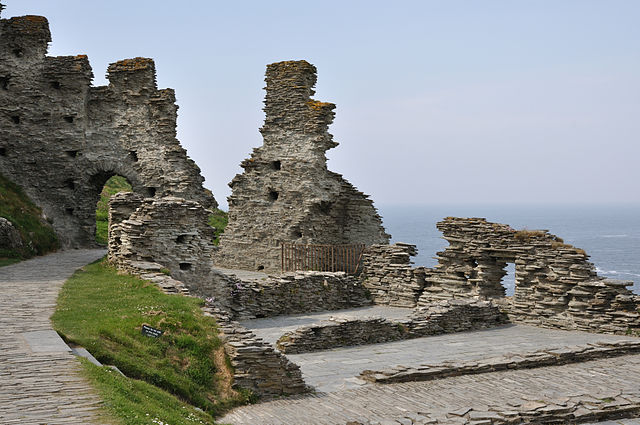The Tintagel Castle is a wonderful historic location shrouded in mystery and legends. Moreover the site provides numerous scenic views over the Atlantic Ocean and this only gives additional flavor to the mystical aura that radiates from the crumbling stones and the piles of rubble.
The remains of the castle are nestled on the top of high windy cliffs on the rugged coast of North Cornwall, just near the village of Tintagel, in southwestern England.
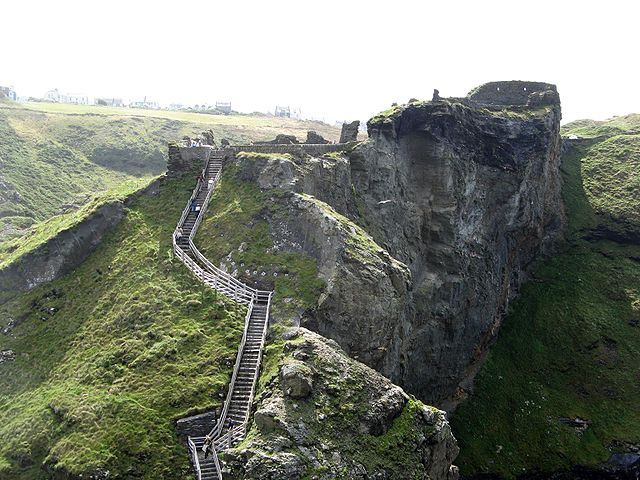
Throughout the centuries this remarkable castle and the dramatic coastline has inspired many curious visitors, as well artists and writers.
Here, history and legends are fantastically fused. Just as a precise line often cannot be drawn between the Atlantic Ocean and the sky on the horizon, similarly, there is an impression that a precise distinction between the fictional and real events that happened here in the distant past cannot be made.
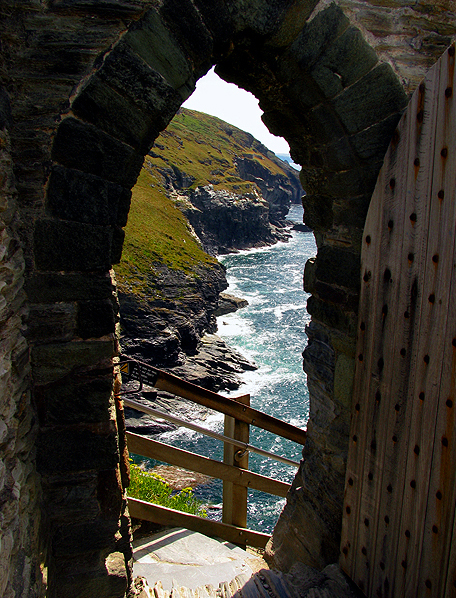
The ruins are located on Tintagel Island and on Tintagel Head the mainland, which are linked by a modern walkway.
In fact this small island is not quite an island. It is a peninsula surrounded by the ocean waters on three sides and connected by the mainland by a narrow neck of land. It is constantly battered, as is the entire coast of North Cornwall, by the strong and often destructive waves of the Atlantic.
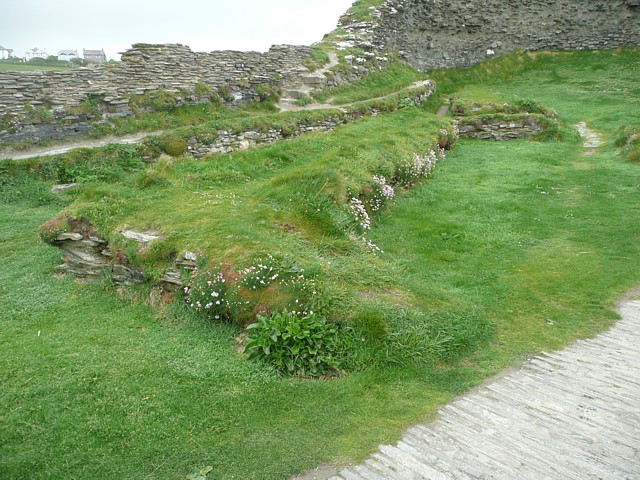
The skeletal remains of the 13th century medieval fortification are remarkable and they represent only one episode of the long history of the castle. The remains that can be seen today are from the castle that was built by Richard, Earl of Cornwall, in 1233.
The great hall, where supposedly Richard entertained lavishly, are surrounded with thick walls, numerous steep stone steps and cliff edges. Foundations of more than twenty buildings can be seen on the eastern side of the headland. However evidence found during archaeological excavations clearly shows that the location was inhabited since Roman times.
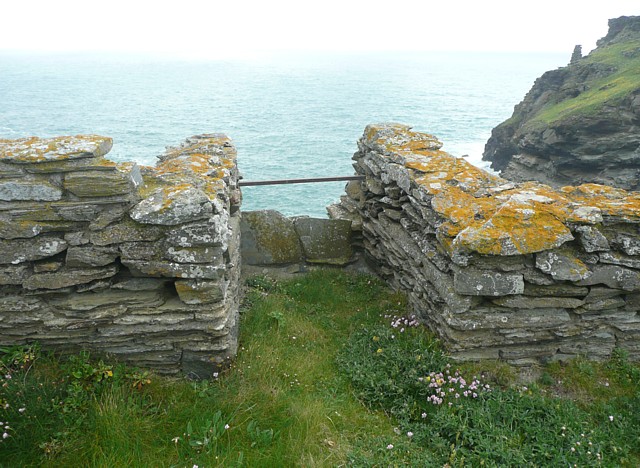
Tintagel Castle is closely linked with the legend of King Arthur. It is said to be the birthplace of the legendary King Arthur. There is no known evidence or valid historical documents about his existence as a historic figure, but still, Tintagel Castle is widely known as a fortress used by this legendary king.
His figure had for centuries been part of the Welsh myths when he was for the first time presented to the non-Welsh world in the 1100’s by Geoffrey of Monmouth in his fictional version of the British history, Historia Regum Britanniae (The History of the Kings of Britain).
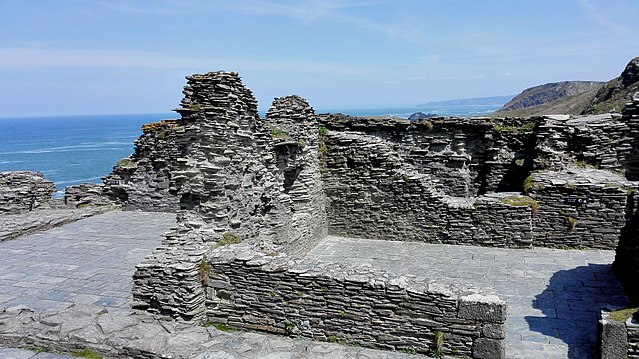
According the legend, Tintagel was the residence of Gorlois, Duke of Cornwall. The wizard Merlin used powerful spells to disguise Uther Pendragon to look like Gorlois. Disguised as the Duke of Cornwall, Uther entered Tintagel without any problem and seduced his wife Igraine. As a result of this seduction, King Arthur was born.
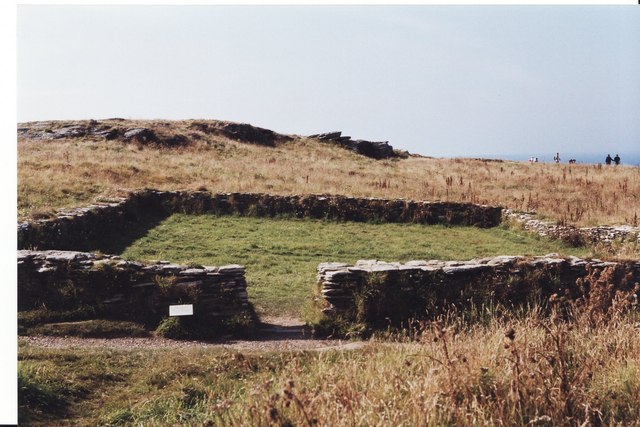
There are assumptions, not backed up with any proof, that Richard constructed the castle in order to strengthen his connections with Arthur and the ancient rulers of Cornwall.
In the second half of the 19th century, the poet Alfred, Lord Tennyson, reinforced this Arthurian connection in his cycle of twelve narrative poems “Idylls of the King.” In fact during the Victorian era people became obsessed with the Arthurian legends and thus Tintagel Castle became very popular destination.
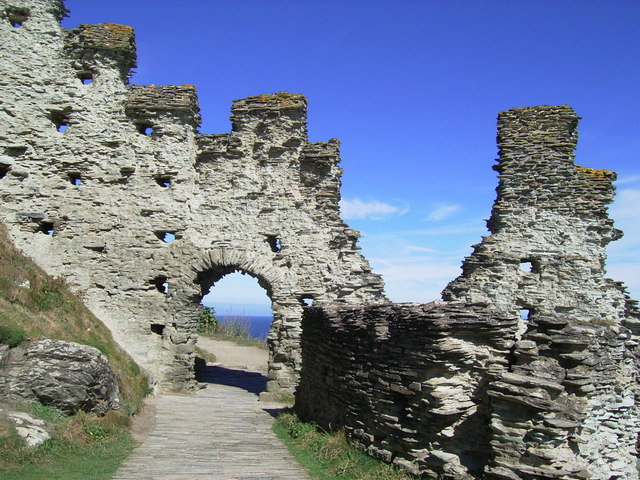
Near the castle the so-called Merlin’s Cave can be still visited. At the highest southern point of the island there is an artificial hollow in the rock known by locals as “King Arthur’s Footprint.”
Some historians believe that it was used for the inauguration of kings in the medieval period. The castle also features in the tale of the tragic romance between Tristan and Isolde.

Soon after the Roman invasion of this part of Britain in the 1st century AD and until the fall of the Roman Empire, a Roman settlement and a small military camp existed on the site. During the 5th and 6th centuries, Tintagel became a trading settlement of the Celtic kings.
Legend says that one of these Celtic kings was King Mark and Tintagel was one of his strongholds.
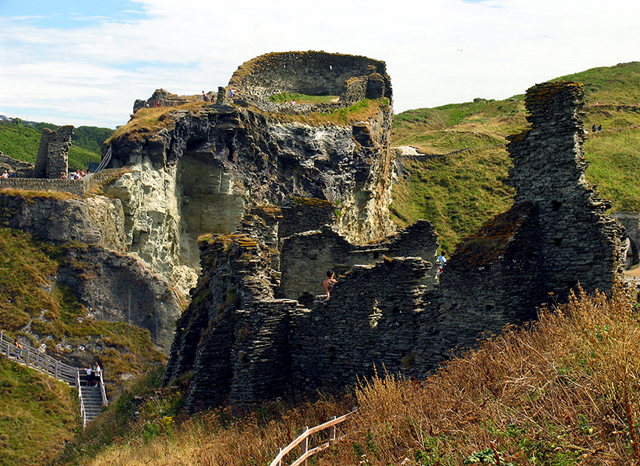
His nephew Tristan fell in love with Isolde (or Yseult). She became the wife of King Mark and lover of Tristan, and thus Tintagel became part of the story.
Archaeological discoveries show that during the Romano-Celtic period the site flourished as a significant trading post between the Mediterranean region and the British Isles.
Certainly there are still hidden treasures under the ruins waiting to be found. The site has been systematically excavated since the 1930s and without doubt it has many secrets to reveal. Extravagant imported Mediterranean pottery of the 5th and 6th century have been found, including amphorae from the Aegean islands.
Large Tunisian oil jars, Carthaginian dishes, and fragments of fine glass that is believed to have been made in 6th or 7th century in Malaga, Spain, were also found.
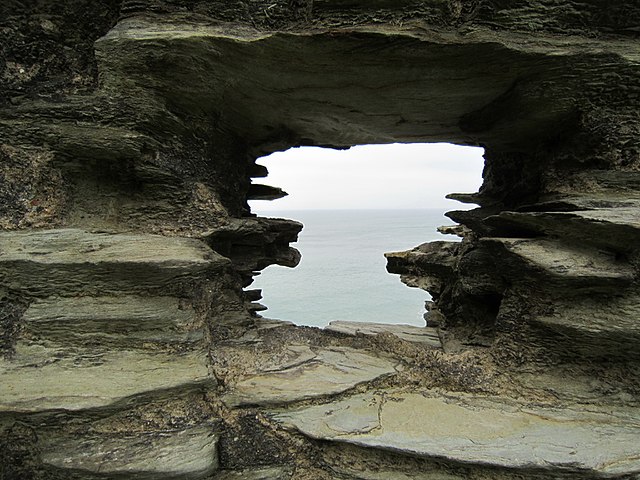
But probably the most interesting and the most intriguing artifact is the 1,500 year old piece of slate which contains two Latin inscriptions. One of the inscriptions could be translated as: “Artognou, father of a descendant of Coll, has had (this) made.” Who Artognou was is still a matter of debate among researchers.
Future excavations could fill some of the gaps and complete the fascinating story of the Tintagel Castle. The site is now property of the Duchy of Cornwall and it is still a popular tourist destination.
